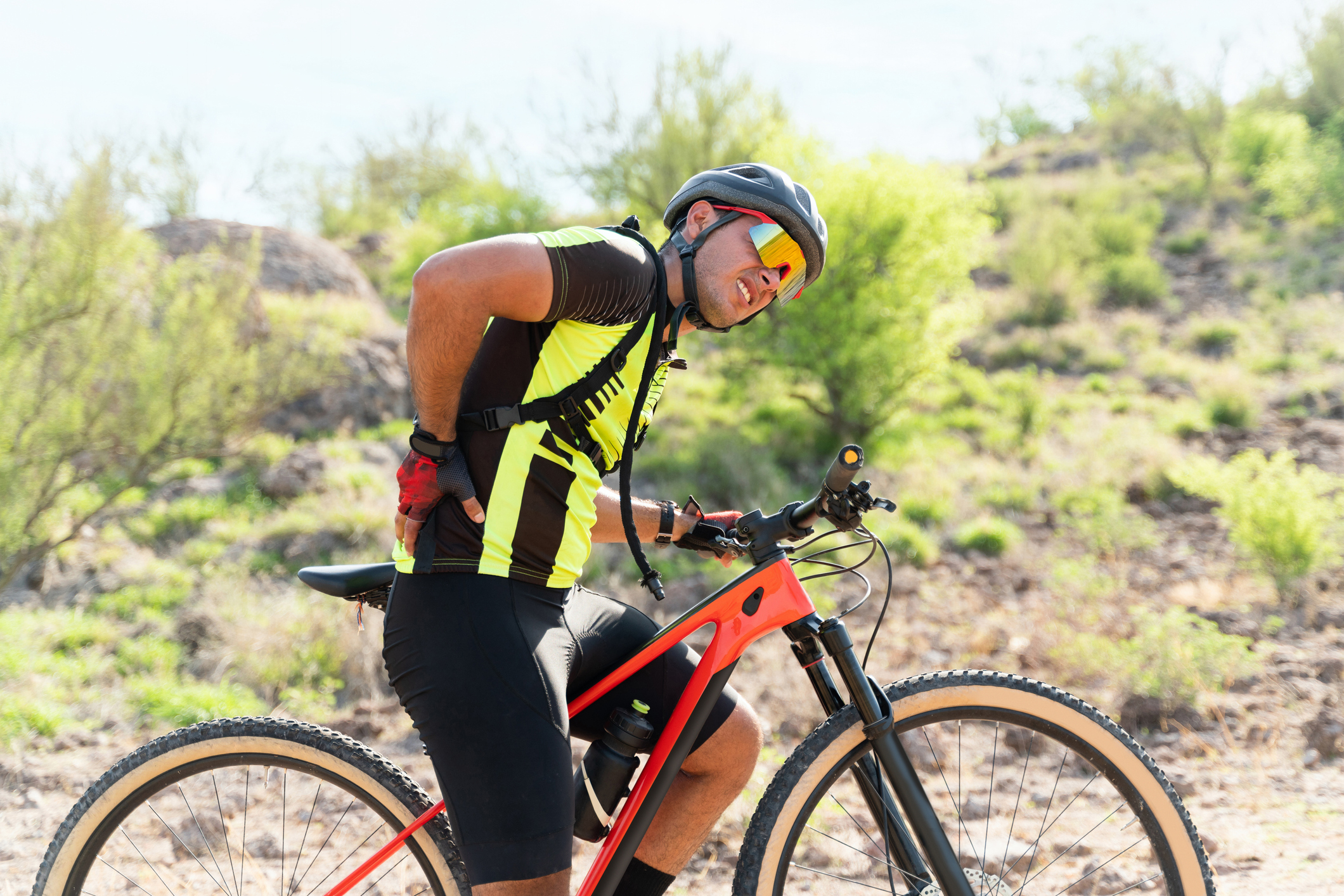Cycling is a great form of exercise. However, good cycling posture is key to prevent injury. This newsletter will focus on the best posture and most common problems that may occur. Kind regards
 If you and your family have decided to take up cycling then what a great choice. Our local area is fairly easy cycling terrain – flat and the scenery in the parks and along the river is fabulous.
If you and your family have decided to take up cycling then what a great choice. Our local area is fairly easy cycling terrain – flat and the scenery in the parks and along the river is fabulous.
However, before you whizz off to explore along the Thames, ensure that your bikes are set up correctly.
Pedal to Saddle height is correct when at full downward pedal you should just stop short of fully straightening out your knee. As your kids grow you may need to assess their saddle heights every 6 months to ensure that they don’t end up cycling with overly flexed knees.
Handlebars should be aligned so that your elbows remain loosely flexed and not locked out straight when cycling.
Obviously, if you have a racing bike then cycling posture alters again. With good core and correct saddle height, you should not need to put full weight through the shoulders, elbows and hands when cycling. We always recommend getting a bike fit to ensure that you have the correct set-up for racing bikes.
 Neck pain is one of the most commonly reported pains related to cycling.
Neck pain is one of the most commonly reported pains related to cycling.
On racing bikes this is often due to poor cycling posture with bad helmet adjustment.
Ensure that you are not over-extending your neck and tilt the helmet more to the back of the head.
Keep elbows bent and shoulders forward to support the collar bones to give greater shock absorption.
Make sure that the handlebars are not too low as this can increase extension of the neck.
Try and tuck your chin in when riding to reduce neck extension and find a more neutral spine.
Be careful when turning your head when doing a manoeuvre in traffic – try to raise up on the handlebars to reduce neck extension when turning.
Shoulder Pain is often reported after long rides.
Again, check posture and that the saddle is angled correctly and not too low at the front. If you are sliding forwards along the saddle then you will automatically brace your weight on your arms and shoulders when riding and this will cause lots of postural problems. As Osteopaths, we advise slightly tilting the saddle backward to align the pelvis so that core muscles engage more readily.
Knee pain around the knee cap is the most common knee pain associated with cycling.
Ensure that your saddle is at the correct height to avoid over-flexing the knees. Also, be careful to cycle with knees pointing straight ahead and do not allow any outward movement of the knee as that can also cause damage behind the kneecap.
Wrist/Hand Pain will occur if your cycling posture is incorrect.
Saddle angle and handlebar height are key to avoid over-extending your wrists or putting too much weight forwards through your hands. We have had patients experiencing pins and needles on long rides and tendonitis in the wrists and forearm. When riding long distances, move your weight from hand to hand to avoid over-loading the wrists and hands.
Ankle Pain can occur on racing bikes.
If you have a history of ankle sprains then ligament strain from previous injury can contribute to ankle pain when cycling. Your Osteopath can prescribe a tailor-made regime to help strengthen the ankles and also provide treatment of leg muscles to ease the pain. Getting the right cleat position is crucial to avoid overstrain of the ankles and so getting a good bike fit for a racing bike is key.

First of all – seek help to get a diagnosis of what structure is involved causing you pain. Your Osteopath will be a good first port of call for full differential diagnosis and if further investigations such as MRI scan or X-ray are required, they will help you navigate how to do that.
Once you have a diagnosis, your Osteopath can give you hands on treatment and practical advice to kickstart the healing process. They will also advise on how to prevent further injury with rehabilitation exercises and forward management of your cycling regime.[/caption]
If you have pain, contact us!
If you have aches or pains, don’t wait, just call the clinic and come in and we will be able to diagnose the problem. Our Osteopaths are happy to help so please call 02089776396 and we can get you back on The Road to Recovery.

You can email info@osteopathuk.co.uk or call 02089776396
Click the link for our website: www.osteopathuk.co.uk
Please do not hesitate to get in touch with us for any reason, we are here to help and welcome any feedback. Click here for more information.